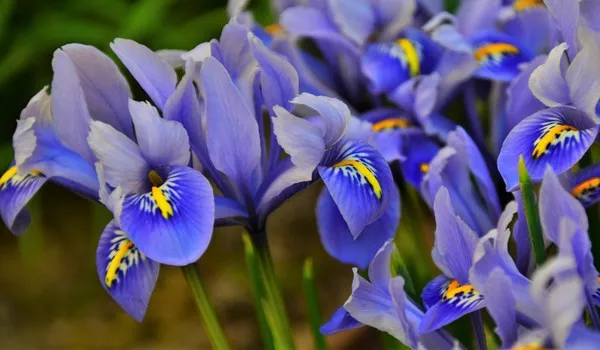African violets (Saintpaulia spp.) are beloved houseplants known for their vibrant flowers and lush foliage. While these charming plants can be relatively easy to care for, getting them to bloom consistently can be a rewarding challenge for many enthusiasts. In this comprehensive article, we will explore the key factors and techniques to encourage African violets to flower, ensuring their overall health and beauty.
1. Understanding African Violets
An Introduction to African Violets
African violets are native to tropical regions of eastern Africa and have become popular as indoor plants worldwide due to their compact size and variety of flower colors. They belong to the Gesneriaceae family and are available in different cultivars with varying flower shapes and patterns.
Light and Temperature Requirements
Proper light and temperature are crucial for African violets’ overall health and flowering. These plants prefer bright, indirect light, but direct sunlight should be avoided, as it can cause leaf scorch. Ideal temperatures range between 65°F to 75°F (18°C to 24°C), and they thrive in a slightly humid environment.
2. Choosing the Right Pot and Soil
Pot Selection
Selecting the right pot is essential for African violets. Opt for a shallow pot that allows air to circulate around the roots. Since African violets have shallow root systems, using a pot that is too deep may lead to waterlogging and root rot.
Well-Draining Soil
African violets require well-draining soil to prevent waterlogged roots. Use a specialized African violet potting mix that includes ingredients like peat moss, perlite, and vermiculite. Avoid heavy garden soil or potting mixes with excessive moisture retention.
3. Watering Techniques
Consistent Moisture
African violets prefer consistent moisture, but overwatering should be avoided. Allow the top inch of the soil to dry out slightly between waterings. When watering, aim to keep the leaves dry to prevent water spots and fungal issues.
Bottom Watering
A popular watering technique for African violets is bottom watering. Place the pot in a shallow tray of water and allow the plant to absorb water through the drainage holes at the bottom of the pot. This prevents water from coming into direct contact with the leaves and crown, reducing the risk of rot.
4. Fertilization Practices
Balanced Fertilizer
Regular fertilization is vital for encouraging African violets to flower. Use a balanced fertilizer with an N-P-K ratio of 10-10-10 or 14-12-14. A water-soluble fertilizer is preferable, as it ensures even distribution of nutrients to the plant.
Frequency of Fertilization
During the active growing season, which typically occurs from spring to early autumn, African violets should be fertilized every 2 to 4 weeks. In the winter months, when growth slows down, reduce the frequency to once every 6 to 8 weeks.
5. Pruning and Deadheading
Pruning Leggy Growth
To maintain a compact and bushy appearance, African violets benefit from occasional pruning. Trim leggy or elongated stems just above a set of healthy leaves. This encourages branching and helps the plant maintain a more attractive shape.
Deadheading Spent Flowers
Remove faded or spent flowers regularly to encourage continuous blooming. Deadheading redirects the plant’s energy toward new flower production rather than seed development.
6. Propagation Techniques
African Violet Propagation
Propagating African violets is an excellent way to create new plants and increase the chances of flowering. One common method is leaf propagation, where a healthy leaf is carefully removed from the parent plant and placed in a suitable rooting medium. With proper care, the leaf will develop into a new plant that can eventually produce flowers.
7. Managing Pests and Diseases
Common Pests
African violets are susceptible to certain pests, including aphids, mealybugs, and spider mites. Regularly inspect the plant for signs of infestation and promptly address any pest problems. Natural remedies or insecticidal soaps can be used for control.
Preventing Diseases
To prevent diseases like root rot and powdery mildew, ensure good air circulation around the plant and avoid overwatering. Isolate new plants before introducing them to other African violets to prevent the spread of potential infections.
8. Repotting and Root Health
When to Repot
African violets benefit from repotting every 6 to 12 months, depending on their growth rate and the size of the pot. Repotting allows for fresh soil, provides more room for the roots to grow, and can stimulate flowering.
Root Health
Healthy roots are essential for overall plant health and flowering. During repotting, check the roots for any signs of rot or damage. Trim away any unhealthy roots and provide a fresh start with a well-draining potting mix.
9. Identifying and Addressing Common Issues
Yellowing Leaves
Yellowing leaves can be a sign of overwatering or underwatering. Adjust the watering schedule accordingly, and ensure proper drainage to prevent waterlogged roots.
Lack of Flowering
If an African violet is not blooming, review its light conditions, as insufficient light can inhibit flowering. Adjust the plant’s position to receive more indirect light.
Conclusion
Growing and nurturing African violets to bloom is a rewarding journey that requires attention to their specific needs and care. By providing adequate light, proper watering, balanced fertilization, and occasional pruning, these charming houseplants can display their beautiful and vibrant flowers throughout the year. Remember to maintain a healthy environment, prevent pest and disease issues, and repot as needed to ensure the continued health and blooming success of African violets. With patience and dedication, these delightful plants will reward you with a stunning display of colorful blooms to brighten up any indoor space.


